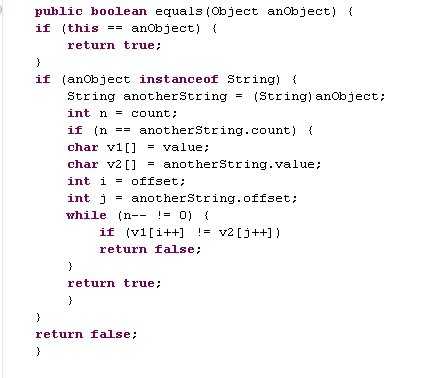下图为String源码
讲上图中 if ( anObject instanceof Object) 改为if ( this instanceof Object && anObject instanceof Object) 后s.equals("asd")也可以避免NullPointerException
以下代码为仿照仿照上图重写的一个方法 :
public boolean equals(String str , Object
anObject){
if (str == anObject)
{
return
true;
}
if ( str instanceof Object &&
anObject instanceof Object) {
String
anotherString = (String)anObject;
int n =
str.length();
if (n == anotherString.length())
{
char v1[] = str.toCharArray();
char
v2[] = anotherString.toCharArray();
int i =
0;
int j = 0;
while (n-- != 0)
{
if (v1[i++] !=
v2[j++])
return
false;
}
return
true;
}
}
return
false;
}
"asd".equals(s)与s.equals("asd")为什么前者可避免NullPointerException,布布扣,bubuko.com
"asd".equals(s)与s.equals("asd")为什么前者可避免NullPointerException
原文:http://www.cnblogs.com/IT-WJ/p/3607553.html